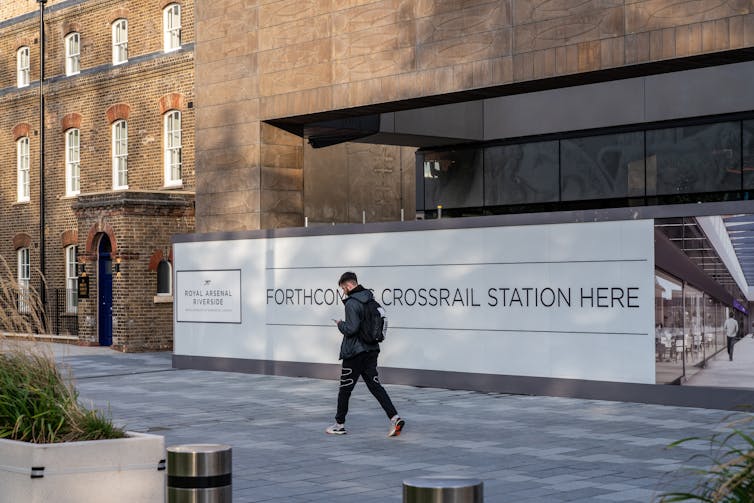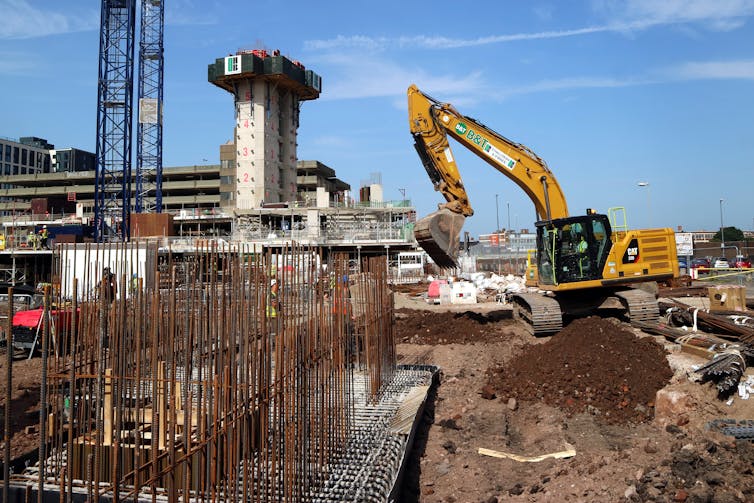 Sydney Opera House. Korawee/Shutterstock
Sydney Opera House. Korawee/Shutterstock
If an infrastructure megaproject is completed late and over budget, it is widely judged to be unsuccessful.
For instance, the delay to Crossrail, a new train line across London and the south east of England, has been labelled “appalling news”. Crossrail is also projected to cost nearly £4 billion more than its original budget.
My research on projects like these, however, suggests that this narrow framing is not always appropriate.
Instead of comparing the original cost and time estimate of these megaprojects against the final result, it may be more important to think about the the value delivered by these infrastructure across their life time and the sustainability of the project – and whether this is worth the final cost and time taken. This is more difficult, but also far more meaningful.
Measuring success
Framing the success of infrastructure megaprojects around whether they are completed on time and to budget is a considerable limitation that may warp our understanding of success. If a bridge is built to link two towns, people travelling between them using the new bridge will save time and fuel over a longer route. A new transport route may boost the nearby economy, creating local jobs. Cost-time framing does not capture this.
 London’s Crossrail project has fallen behind schedule. Steve Heap/Shutterstock
London’s Crossrail project has fallen behind schedule. Steve Heap/Shutterstock
In order to take these results into account, large projects are often subject to a cost-benefit analysis. This is the comparison of the costs involved in building and operating the infrastructure against its benefits.
For a simple project like a primary school, cost and benefit are easy to establish. On the cost side is the construction and operations. In terms of benefits, a certain number of children will be educated, and a certain number of jobs will be created.
However, the benefits of a large infrastructure project, like a bridge, are very hard to predict and extremely subjective. One of the towns linked by the bridge may be affluent and another deprived, so by connecting the two together and reducing commuting times, the deprived town will receive a boost. People living there may have better access to jobs, and the town itself may become regenerated. However, this might also lead to house prices rising and subsequent gentrification, displacing previous communities.
The original cost estimate to build Sydney Opera House was AU$7 million (£3.9 million): the final cost was AU$102 million. Another project over budget – and ten years late.
However, more than 10.9 million people visit the opera house every year. Remarkably, the 2018-19 total audience attendance for performing arts events was 1.4 million, so the remaining 9.5 million people went to see the opera house itself. The opera house is a major positive boost for Australia’s economy and culture.
Value and sustainability
A better way of evaluating infrastructure megaprojects would be to investigate their value and sustainability. It is worth considering which people or organisations can claim a share of the value of a project. For instance, the bridge could be free to use for electric vehicles or, before building the bridge, plans could be made for parks and places where people can socialise.
People use infrastructure in different ways. Instead of starting from the infrastructure, projects should begin by considering people and how the project can be planned, designed and delivered for them. For instance, the concerns of local people about disruption or environmental damage should not be dealt with as an afterthought, but be considered from the inception of a project.
 Construction related to the High Speed 2 railway in the UK, which is late and running over budget. Swampy167/Shutterstock
Construction related to the High Speed 2 railway in the UK, which is late and running over budget. Swampy167/Shutterstock
The second point is about sustainability. A project’s sustainability needs to be considered over its lifetime. Infrastructure takes years to build, but should last centuries. In addition, the building and running of the project will require energy – is this affordable and clean, or an expensive and dirty technology?
Furthermore, we know that men and women work a different number of hours, at different times of the day, in different places. A sustainability assessment should weigh up if the infrastructure is promoting gender equality, or increasing the divide. Whether modern slavery is involved in building the infrastructure must also be considered.
Similarly, we should look at positive impacts from a sustainability point of view, such as the creation of secure jobs, and the promotion of innovation in technology.
Cost-time performance might be relevant in the short term, particularly for the organisations involved in the delivery of the infrastructure – but there is a much bigger picture to consider.
Giorgio Locatelli, Professor in Project Management, University of Leeds
This article is republished from The Conversation under a Creative Commons license. Read the original article.

